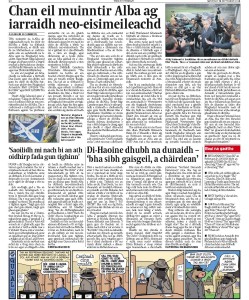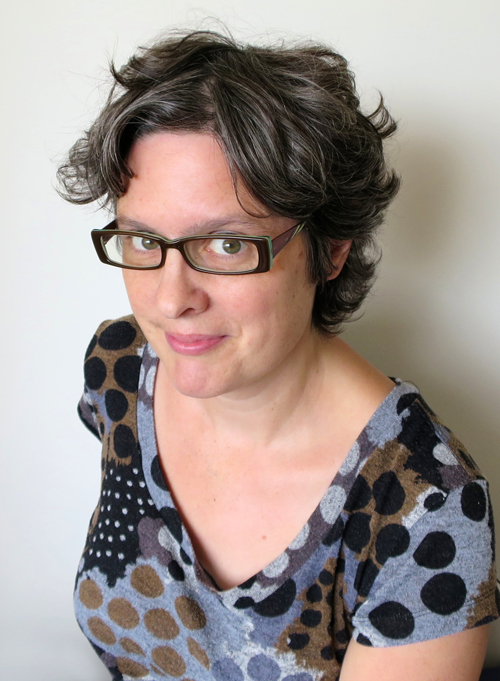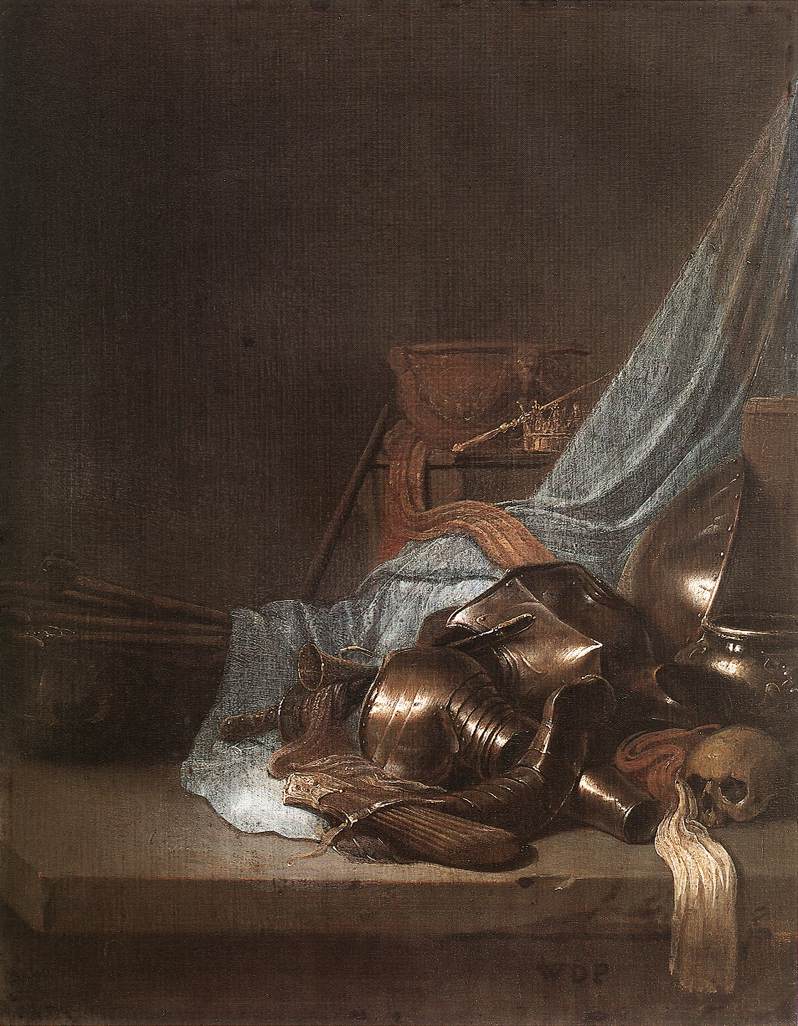Waving a last bye-bye
 There’s a lot of musical chairs going on in Scottish newspapers just now. Every time I log on to twitter there’s another batch of long-established writers, editors, production staff and photographers waving their last goodbyes. And judging by the youth of those who move to fill the very few remaining seats, the terms and conditions can’t be that attractive.
There’s a lot of musical chairs going on in Scottish newspapers just now. Every time I log on to twitter there’s another batch of long-established writers, editors, production staff and photographers waving their last goodbyes. And judging by the youth of those who move to fill the very few remaining seats, the terms and conditions can’t be that attractive.
I’m watching this unfold from across the sea, having waved my own goodbye as freelance contributor four years ago. I probably wouldn’t have got much more work anyway, as they were already piling as much writing as possible – even the specialised stuff like my art reviewing – onto the desks of demoralised permanent staff.
All the time that I was freelancing in one of Scotland’s two big broadsheet stables, my father was freelancing in the other. Every time one of us had tales to tell about redundancies, efficiency savings and editorial hand-wringing, the other had identical tales to match.
Despite years of apparent immunity to cuts, my father has finally fallen too. Maybe that’s why, for me, this round of cuts feels like the last one – the final death knell for Scottish newspapers. In place of the weekly Gaelic page that he has edited since before I was born, they hope to cobble together something unedited, and fully paid for by Gaelic agencies.
“right now, the Scotsman is asking its freelance Gaelic writers if they will work for free”
That’s not news. That’s state propaganda. Why don’t they ask the government to sponsor the news pages while they’re at it? And they could get the galleries to supply art reviews of their own exhibitions. Hey presto! You have what the Dutch would call a sufferdje – a vacant free rag of a newspaper, paid for by advertorials and delivered through your letterbox whether you want it or not.
Sadly, we all know that newspapers are fighting a losing battle against endless free content online. There are the blogs, written for free, some of them adding terrific value (like Lallands Peat Worrier) and many just going through the motions, trying to get noticed (please tell me I’m not one of those). In fact, right now, the Scotsman is asking its freelance Gaelic writers if they will work for free.
Being paid is sooo last century, but food and electricity bills remain as urgent as ever. So writers like me are pushed into the world of paid commercial content, keyword stuffed and designed to convince you to sell your soul (or at least your e-mail address) by the end of 1000 words. “Would you like to know how much money you could make by getting to the top of Google for your chosen search term?” began an e-mail to me today, after I sold my own soul to an SEO training site.
It’s a sad state of affairs for Scottish newspapers. We are watching them wasting away to the bone. I don’t pretend to have the answers; I just know that something important is vanishing from this world. Writing that’s not built around keywords. Writing with no hidden sponsor’s agenda or a pithy call to action button at the end. Writing we would pay good money to read.
Anyway, that’s my tuppence worth on the matter. For free. Now read my bio and don’t miss my call to action on the way out.
_______________________________________________________
 About Catriona
About Catriona
I love to tell stories. My career has covered many bases, but communication has always been at the heart of everything I do. From journalism, politics and PR to art and design; from broadcast animation to published picture books and copy editing, it’s all about making people look and listen, and love what they hear.
Looking for a copywriter to help you tell your story? Get in touch!
